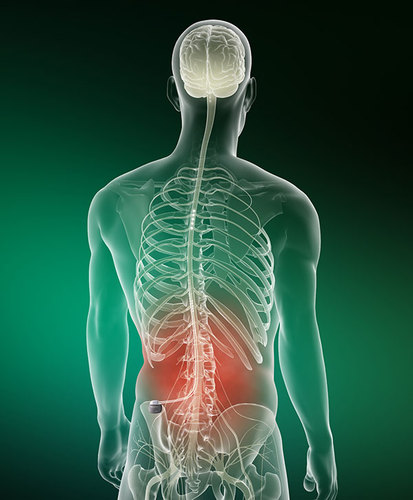 A new study has concluded that burst spinal cord stimulation is “in general” more effective than tonic stimulation in patients already familiar with spinal cord stimulation.
A new study has concluded that burst spinal cord stimulation is “in general” more effective than tonic stimulation in patients already familiar with spinal cord stimulation.
Marleen C Tjepkema-Cloostermans (Department of Clinical Neurophysiology, Medisch Spectrum Twente Hospital, Enschede, The Netherlands) and others state in the journal Neuromodulation that it has been suggested that burst spinal cord stimulation (five pulses at 500 Hz, delivered 40 times per second) suppresses neuropathic pain at least as well as conventional tonic spinal cord stimulation, but without evoking paraesthesia. The aim of this study therefore was to evaluate the efficacy of paraesthesia-free high and low amplitude burst spinal cord stimulation for the treatment of neuropathic pain in patients who are already familiar with tonic spinal cord stimulation.
The study included 40 patients receiving conventional (30–120 Hz) tonic spinal cord stimulation for at least six months. The authors report that all patients received high and low amplitude burst spinal cord stimulation, for a two-week period in a double blind randomised crossover design, with a two-week period of tonic stimulation in between. The investigators evaluated the average visual analogue scale (VAS) scores for pain during the last three days of each stimulation period, as well as quality of life (QoL) scores, and patient’s preferences.
They report that the “average VAS score for pain were lower during high (40, p=0.013) and low amplitude burst stimulation (42, p=0.053) compared with tonic stimulation (52). QoL scores did not differ significantly. At the individual level, 58% of the patients experienced significant additional pain reduction (>30% decrease in VAS for pain) during high and/or low amplitude burst stimulation. Eleven patients preferred tonic stimulation, 15 high amplitude burst stimulation, and fourteen low amplitude burst stimulation”.
The authors conclude that “burst stimulation is in general more effective than tonic stimulation” and that “individual patients can highly benefit from burst stimulation”; but caution however, that “the therapeutic range of burst stimulation amplitudes requires individual assessment”.
The study, Effect of burst stimulation evaluated in patients familiar with spinal cord stimulation, was published online ahead of print in April 2016.












